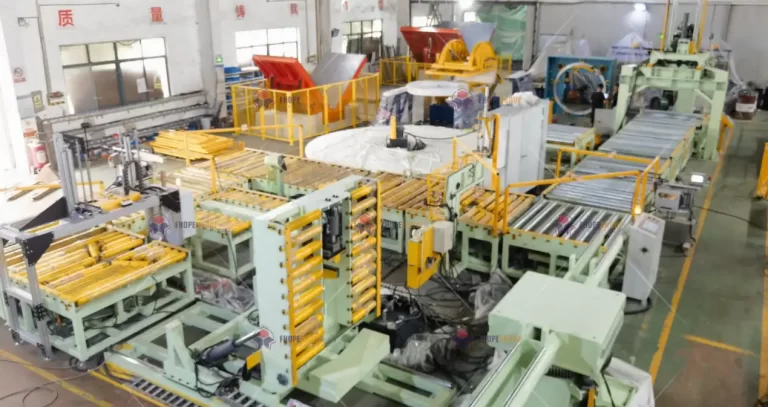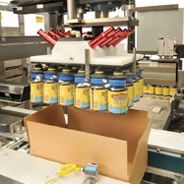Technological advancements are transforming how we handle and package coils. With innovation, companies like ours are revolutionizing efficiency, safety, and costs. Isn’t it time you explored these new possibilities?
Recent innovations in coil packing line manufacturing are focusing on automation and smart technology. These advancements allow for improved efficiency, and reduced human error while maintaining high safety standards. By integrating AI and IoT, manufacturers ensure smooth operations and real-time monitoring, driving productivity and cutting operational costs.

In today’s fast-paced world, staying ahead with the latest in coil packing could unlock your company’s full potential. Explore these cutting-edge technologies transforming the industry, and learn how to adapt them to enhance your processes.
1. What are the Latest Innovations in Coil Packing Line Manufacturing?
Quality and efficiency are vital in coil packing. Emerging technologies now offer solutions that seem straight out of science fiction.
Recent innovations in coil packing line manufacturing have introduced automation and smart technologies, significantly enhancing scalability and precision. These include AI-guided systems for real-time error detection and smart sensors for seamless operations, reshaping how coils are packed and handled.

Smart Technologies and Automation
The integration of smart technologies in coil packing lines is reshaping how industries handle materials. Traditional manual methods are now giving way to automation, leading to major improvements in efficiency and safety. Let's break down some key innovations:
-
AI and Machine Learning: These technologies help in identifying patterns and anomalies, providing instant feedback for corrective measures. This reduces downtime and enhances product quality.
-
Internet of Things (IoT): With IoT-enabled devices, real-time monitoring of equipment is possible. This ensures that all components are working optimally, which minimizes the risk of malfunctions.
-
Robotics: Automated robots are now capable of handling complicated tasks without human intervention. This not only speeds up the process but reduces manpower costs significantly.
Here's a simple table summarizing the effects:
| Technology | Benefit | Impact |
|---|---|---|
| AI & Machine Learning | Real-time error detection | Enhances quality control |
| IoT | Continuous monitoring | Reduces downtime |
| Robotics | Automates handling tasks | Cuts labor costs |
Through the years, I have seen the dramatic transformation of coil packing lines, from manual labor to embracing robotics and smart technologies. If you’ve not yet delved into this realm, you might be missing out on tremendous opportunities for growth.
By following these trends, companies like ours remain at the forefront of innovation in coil packing. As someone with decades of experience, I can assure you that adapting these technologies is not just beneficial—it’s essential for future success.
2. How Do These Technological Advancements Impact the Industry?
Packaging innovation has transformed how we meet market demands, emphasizing automation's compelling role in optimizing operations and ensuring superior product protection and delivery.
The impact of technological advancements in packaging is profound, enabling industries to maintain high levels of efficiency, reduce costs, and drive growth through innovative automation solutions.

Automation's Role in Enhancing Efficiency and Safety
In today's fast-paced industrial environment, efficiency and safety are paramount. Automation technologies such as coil wrapping machines, pallet inverters, and coil upenders play a unique role. They not only streamline the packaging process but also provide consistent quality and minimize risks. By embracing these advancements, companies can mitigate challenges like managing tight production schedules and meeting stringent quality requirements. For example, automated systems can manage heavy steel coils, reducing human intervention and the associated risk of errors and injuries.
| Feature | Manual Processes | Automated Systems |
|---|---|---|
| Labor Costs | High | Reduced |
| Packaging Consistency | Variable | High |
| Safety Risks | Elevated | Minimized |
As the industry advances, the demand for machine learning and AI integration within these systems is evident. Companies leveraging data-driven decision-making can anticipate and counteract potential disruptions in their supply chain, further solidifying automation's indispensability in modern packaging solutions.
3. What are the Future Prospects for Coil Packing Technologies?
The coil packaging technology field is on the verge of a transformative phase, driven by innovations that promise smoother operations and increased safety for industries engaged in heavy material handling.
Continued advancements in coil packing technologies will likely focus on increasing efficiency, enhancing safety, and integrating smarter, data-driven systems to address future industry challenges.
Innovations Shaping the Future of Coil Packaging
The packaging sector's evolution is anticipated to hinge on several core technological developments that cater to efficiency, safety, and sustainability. As industries pivot towards smarter manufacturing, several trends stand out:
| Trend | Current State | Future Direction |
|---|---|---|
| Automation | Existing but evolving | Proliferation of AI and IoT |
| Sustainability | Growing focus | Eco-friendly materials |
| Customization | Limited | Client-specific solutions |
The adoption of AI and IoT in coil packing technologies can elevate operational efficiency by predicting maintenance requirements and optimizing performance metrics. Sustainability, a pressing global issue, will see increased development of eco-friendly packaging solutions that reduce waste and energy consumption. Moreover, customization will grow in response to industries' unique requirements, with technology enabling tailored solutions that perfectly align with client needs. As these technologies mature, we can expect the coil packaging landscape to become more adaptive, efficient, and user-oriented, paving the way for groundbreaking applications and products.
Conclusion
Technological advancements in coil packing are reshaping manufacturing by boosting efficiency and safety. These innovations enhance global market potential, ensuring sustainable growth and meeting future demands.
Summarize the importance of these advancements in shaping the future of coil packing line manufacturing and their potential impact on the global market.






